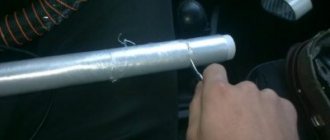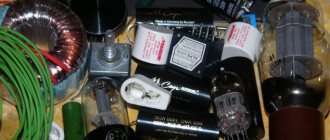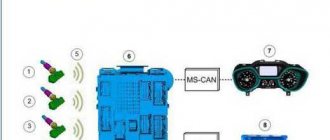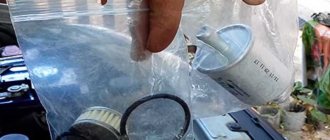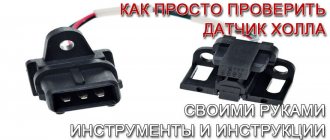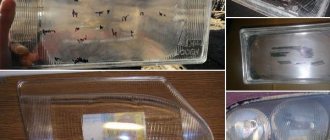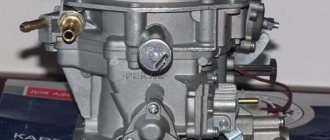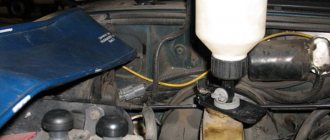| Place | Name | Characteristics in the rating |
| TOP 10 best car audio manufacturers |
| 1 | Harman Kardon | The best choice of car audio for every taste and budget |
| 2 | Burmester | An uncompromising approach to production and control. Manual assembly |
| 3 | Bang&Olufsen | Audio system as an object of art. Acoustic perfection and the best design |
| 4 | Bose | Manufacturer of acoustic systems with 50 years of experience. Lots of know-how and technology |
| 5 | Morel | Originality of solutions. Presence in all price segments |
| 6 | Eton | High sound quality, noted by the best European experts |
| 7 | Focal | Peculiar sound. Affordable prices for most models |
| 8 | Alpine | Best quality at a middle price. Easy installation and hassle-free setup |
| 9 | Kicker | Unrivaled bass depth. Availability of a compact subwoofer in the product line |
| 10 | Pioneer | A variety of models presented everywhere. Developed service network |
Special Settings
The following functions will be useful for some car enthusiasts:
- turning off Demo mode;
- setting date and time;
- setting up the display of traffic jams via TMC on the radio.
Demo mode is needed to demonstrate the capabilities of the device in a store environment. If you leave it, then when the device is turned off, the backlight and luminous inscriptions on the display will work.
You can disable Demo mode in the hidden menu by pressing the SRC key on the radio that is turned off. By turning the joystick handle, find the DEMO item and switch the sensor from the ON to OFF position. The BAND button is used to exit the menu.
Time and date are also selected in a hidden menu, but in the System section, where you can select 12 or 24-hour mode and change the desired indicators by turning the wheel.
Traffic displays via TMC are supported by Garmin and iGo programs. By installing one of them, you can receive information about traffic on the roads of large cities (about traffic jams, accidents, road repairs, etc.). iGo has the ability to save a list of radio stations that broadcast data of interest to the car owner. Using these programs, the display of the radio can display the route between specified points, the time of possible delays due to traffic jams, etc. To operate these applications, you need a set of iGo Primo licenses and special TMC licenses.
In order to set sound reproduction parameters in the car radio that will allow the owner to enjoy good quality music, it is not necessary to contact specialists; you can do it yourself. High sound quality can be achieved from an inexpensive audio system by correctly defining the sound reproduction parameters. Some models have the ability to install additional applications that will increase the level of comfort when traveling by car.
Super sound: rules for choosing good acoustics in a car
First of all, you need to pay attention to the company that produces speaker systems. Here are some of the most reliable:
- MTX,
- Focal,
- DLS
- Infinity,
- hertz
- Alpine,
- Morel,
- Magnat and others.
Of course, now you ask, what about the famous Panasonic, Kenwood, Pioneer and so on?
Yes. Among them there are also good acoustics in the car, but, as a rule, this happens very, very rarely. Although, for example, Pioneer acoustics for cars are purchased very often by many.
- When choosing speakers, keep in mind that their suspension should not be made of fabric, but rubber.
- In the front of the car there should be spaced-out acoustics with separate tweeters (in common parlance - tweeters). By the way, it is better to choose silk tweeters, and then you will get a soft and even sound.
- At the rear, install speakers measuring 6 by 9 inches (17-20 cm).
- If space allows, it is better to purchase a set of acoustics for a large-diameter car.
- Some radios are “picky”: they play great with some speakers, but don’t handle others at all.
One of the important factors when choosing acoustics in a car is what kind of complexity of the system you want to purchase for the car, i.e., why is it needed at all.
Based on this point, let's consider all these systems in more detail.
What car
Acoustics in a domestic car
Usually expensive cars have music installed from the factory. And this is a completely acceptable music system, so there is no point in installing a music device sparkling with all the colors of the rainbow in a strict luxury car. According to statistics from a survey of car enthusiasts for 2015, 84% of car audio buyers install it on domestic cars. 13% of respondents buy acoustics for installation on inexpensive foreign cars. And only 3% out of 100 buy it for cars that are in the highest price category. So we can say with confidence that it is our domestic cars that choose the music “to suit themselves.” Basically, the kit is assembled according to the parameters of musical devices.
Level three. Upgrade without replacing the standard head unit
If all these “flowers” with speakers seem frivolous to you, it’s time to move on to the “berries” - touching on the amplification part of the system. The main problem that has to be solved in this case is where to get the original uncorrected linear signal from which to start building a new audio system.
In fact, you won't find it anywhere just like that. And there is simply no single recipe for all cars; in any case, you will have to turn to professionals who specialize in “voicing” cars. By and large, it all comes down to four options.
The first option is to “pull out” the linear signal from the electronic bowels of the head unit. For many models, this process, by the way, is well established, and for a relatively small amount your standard head unit will acquire a tail with RCA connectors on the rear side.
In many head units it is not difficult to get a line signal. Sometimes, however, its level is low, and in order not to pick up interference on the way to the amplifier, you have to add a small output buffer. But for an experienced master this does not cause any particular difficulties.
The second option has to be used when it is not possible to display “linear lines”. In this case, we leave the standard amplifier in the system, decisively disconnect the standard speakers from it and connect its outputs to the inputs of the new amplifier. The only requirement for the latter is the presence of so-called high-level inputs.
High-level inputs are a feature exclusively of car audio equipment; at home, it would hardly occur to anyone to connect one amplifier after another. In a car this is a necessary measure, and although technically it is not very elegant, it still makes sense. After all, it is no longer low-impedance speakers that will be connected to the standard amplifier. Its output stages will operate in a completely different mode, with lower currents, so the signal quality will be somewhat different. In any case, you will get better sound than in the state.
But this option is also not always applicable. A little higher, I already said that many systems introduce intentional signal correction. In this case, there is no point in simply passing the “crooked” signal from the standard amplifier to a new one. And if the standard system has channel-by-channel amplification, then you won’t even find a curved signal - only frequency “cuts”.
For such cases, there is a third option, using a digital processor like Audison bit One, Audison bit Ten, Helix DSP, etc. The trick of these devices is that they can combine the original audio signal from these separate frequency pieces, remove the correction (or rather , adjust the signal “in the opposite direction”) and send such a restored signal to a new amplifier. In the right hands, by the way, it’s quite an effective thing.
For what purpose
Define your goals
Before running to the store, a car enthusiast needs to decide for what purpose he is buying a music system? Every person thinks differently. Some people buy acoustics in order to enjoy listening to their favorite song in the car - this is the most common category of people, others just to have sound - this category is also common. There are even people who buy a music system in order to participate in car music competitions, but this is a separate category. Their requests are not shared by ordinary people. And besides, such professional acoustics are comparable in cost to a new domestic car, and in power they can even compete with speakers for rock star performances. Let's take a closer look at each category.
